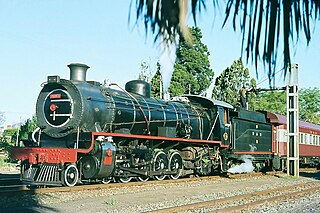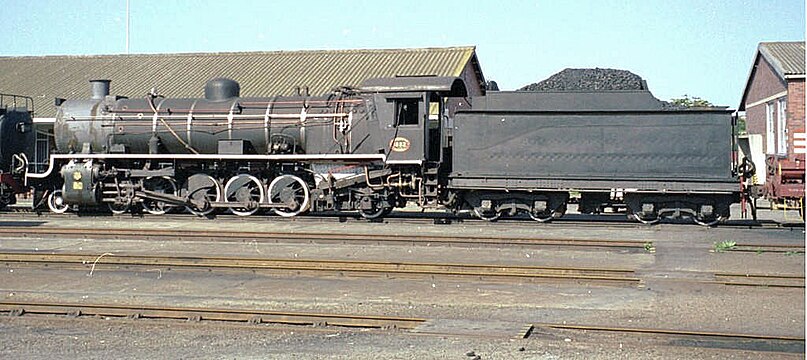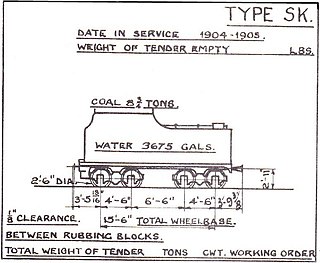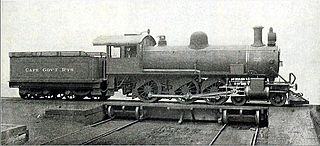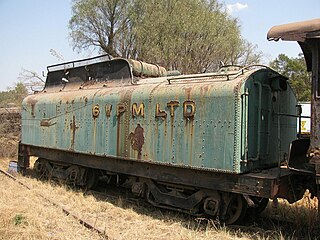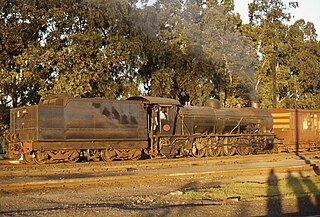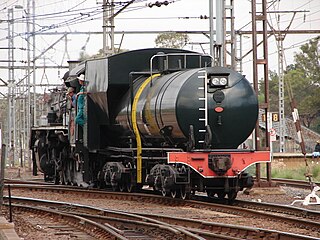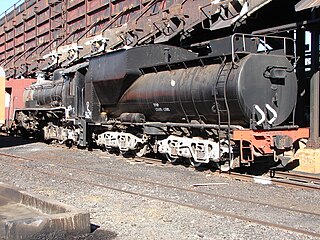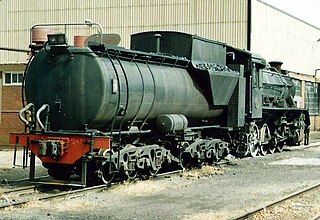Type LP tender on SAR Class MJ1, c. 1920 | |||||||||||||||||||||||||||||||
| |||||||||||||||||||||||||||||||
| |||||||||||||||||||||||||||||||
| |||||||||||||||||||||||||||||||
The South African type LP tender was a steam locomotive tender.
Contents
- Manufacturer
- Characteristics
- Locomotives
- Classification letters
- Modifications
- Illustration
- References
The Type LP tender first entered service in 1918, as tenders to the Classes 14C, 15B and MJ1 steam locomotives which were acquired by the South African Railways from Canada in that year. [1] [2] [3]

The South African Railways Class 14C includes four batches of the same locomotive type, all initially designated Class 14C. Through reboilerings, rebalancings and cylinder bushings during its service life, this single class eventually ended up as six distinct locomotive classes with two boiler types and a multitude of axle load and boiler pressure configurations.

The South African Railways Class 15B 4-8-2 of 1918 was a steam locomotive.
The South African Railways Class MJ1 2-6-6-0 of 1918 was a steam locomotive.




